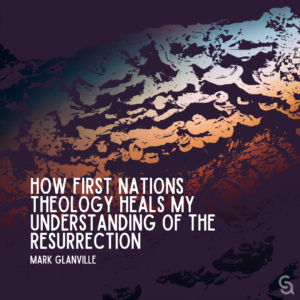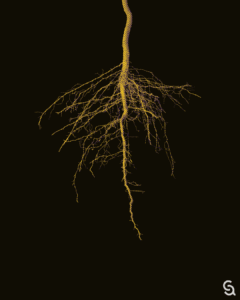 Encountering painful truths
Encountering painful truths
A group from our church visited the abandoned building of a former First Nations residential school. St. Mary’s, as it was called, operated in Mission, British Columbia. We sat in a listening circle to receive the memories, pain, and reflections of two elderly women—one who grew up at that school and another who attended a different residential school nearby. Both were taken from their families at just 5 years old. Both were prohibited from speaking their traditional languages. Both were forbidden even from speaking to their siblings who were also students.
Through tears, they spoke of hunger, sadness, and the erasure of their culture. We were struck by their strength—their ability to find humor and friendship amid circumstances of unspeakable loss and abuse—and by their gracious willingness to meet with us and share their stories.
Afterward, we walked the dark halls of the school, from the eating area to the dormitories where children once slept. One long dorm room, painted light blue, had a door at each end. A priest’s room stood by each door. Our First Nations guide explained that sexual abuse had taken place in those rooms.
What do we do with the sins of our kin?¹ With our devastating history of church-run residential schools in Canada, the U.S., and Australia? Can we face these sins and still go on as the church? This secrecy, abuse, and hubris are part of our story. And the generational confessions of Nehemiah 9 and Daniel 9 show us that the sins of our forebears—and of our communities—matter.² In the spiritual realm, we can’t ignore them. They are truly ours.
Learning to listen, not fix
We might assume that repentance means boldly stepping up to fix what has been broken. But what if healing requires something different—especially for those of us who are white? What if the first step is attending to our own healing and resisting the well-worn path of the white savior? A crucial path forward is to take a humble posture, ready to learn from Indigenous communities. And in doing so, we may rediscover parts of our biblical tradition that have been long dormant.
Take, for example, the core Indigenous belief in the relationality of all things. “All my relations,” our Indigenous friends often say, with arms open wide. This phrase expresses a cherished kinship with animals, the land, the wind, the water—and with you. We share, as Cree elder and theologian Ray Aldred puts it, “a desire for familial relationships between all things.”³
This commitment to relationality reminds me of the surprising kinship embedded in the flood story of Genesis 6–9. After the flood, God makes a covenant—a steadfast commitment—not just with humans, but with the entire creation. People are often surprised when I point out that God makes this covenant with every living thing. Scripture says:
“As for me, I am establishing my covenant with you and your descendants after you, and with every living creature that is with you—the birds, the domestic animals, and every animal of the earth with you, as many as came out of the ark” (Genesis 9:9–10).
This fact is repeated six times in Genesis 9:8–17: God establishes a covenant with all living creatures. This is a relational, covenantal commitment to the flourishing of all life. The covenant metaphor is one of kinship—revealing God’s familial love for creation, as its divine kinsperson.⁴ All my relations!
A resurrection for all creation
This theology has deepened my understanding of the resurrection. For many years, I’ve believed that Jesus’ resurrection is nothing less than the beginning of the renewal of creation. With that in mind, our post Easter Sunday call and response might be:
Leader: Jesus is risen!
Congregation: Renewed creation has begun!
In fact, this is exactly how I begin our Easter services. But First Nations theology helps us go one step further. It reminds us of the relational nature of all created things in Scripture:
Leader: Jesus is risen!
Congregation: The family of creation is rejoined!
Why not try that as we continue to reflect on a a risen Jesus post-Easter?
Now to this question: How do non-Indigenous churches practically embrace this resurrection hope? How can we seek healing in relationships, given the sins of our kin?
Walking the path of solidarity
The invitation may be as simple—and as powerful—as learning. You might attend events, workshops, courses, or ceremonies hosted by First Nations communities, just as our church did when visiting St. Mary’s. These communities are often welcoming. Our family was recently invited to a local salmon feast. Consider participating in the “Blanket Exercise” as a congregation—a powerful, embodied way to learn about the impact of colonization.⁵
Also, read and listen to First Nations voices—Christian and otherwise—such as Richard Twiss, Joy Harjo, Vine Deloria Jr., Tanya Tagaq, Thomas King, Lee Maracle, Rosanna Deerchild, Terry LeBlanc, and Cheryl Bear, among many others.⁶ Pay attention to how their wisdom draws you back to biblical themes that may have gone unnoticed in your tradition.
And when it comes to immigration, we might remember that the initial hospitality extended by First Nations communities to European settlers stands in sharp contrast to the self-interested resistance toward asylum seekers we often see today. As Aldred writes:
“North American Indigenous identity is premised upon an understanding of land (Creation) and spirituality which assumes the identity of ‘others’ (newcomers) as possible opportunities of collaboration.”⁷
As we discern the intersections between colonization and modern injustice, we begin to recognize the idols and ideologies that entangle us. And as our eyes are opened to these colonial patterns, our response should not be to power up and fix everything—but to slow down, to listen, to confess, to join, to share leadership, and to find new, creative ways of living together.
At times, the weight of all this may lead us to wonder: Can we even continue as the church, given these historical sins?
Mark MacDonald, the former Canadian archbishop for Indigenous Anglicans (and himself Indigenous), says someone asks him that question after nearly every talk: How do you persevere as a Christian, knowing what’s been done by the church?
He laughs gently. “It’s a good question, but every time I speak, someone has to ask me the same question!” His answer, each time, is one word: Jesus.
Listening to Indigenous Christians doesn’t just challenge or enrich non-Indigenous faith—it recenters it. It brings us back to what matters most. To Jesus.
This article adapts content from Mark R. Glanville, Improvising Church: Scripture as the Source of Harmony, Rhythm, and Soul (IVP Academic, 2024), pages 122–139; 167–184.
Resources
- This phrase is taken from a sermon by Erin Glanville, “The Sins of Our Kin.”
- Both Daniel and the community of Nehemiah’s day offer prayers of confession for the sins of God’s people, conceived corporately and across time.
- Ray Aldred, “Indigenous and New Comers: An Opportunity for Collaboration,” in Charles A. Cook, Lorajoy Tira-Dimangondayo, and Lauren Goldbeck, eds. Beyond Hospitality: Migration, Multiculturalism, and the Church (Toronto, ON: Tyndale Academic, 2020), 48-56, at 52.
- The kinship dimension of covenant relations is discussed further in chapter 11, “Sins of Our Kin.”
- Kairos Canada describes the Blanket Exercise here.
- You might start a journey of learning by reading Richard Twiss, One Church, Many Tribes: Following Jesus the Way God Made You (Grand Rapids, MI: Chosen, 2000).
- Aldred, “Indigenous and New Comers,” 48.
Dr Mark R. Glanville works as Director of the Centre for Missional Leadership, University of British Columbia, Vancouver. Mark has cowritten Refuge Reimagined: Biblical Kinship in Global Politics with Luke Glanville. His most recent book is Preaching in a New Key: Crafting Expository Sermons in Post-Christian Neighborhoods, and he hosts the Blue Note Theology podcast.
works as Director of the Centre for Missional Leadership, University of British Columbia, Vancouver. Mark has cowritten Refuge Reimagined: Biblical Kinship in Global Politics with Luke Glanville. His most recent book is Preaching in a New Key: Crafting Expository Sermons in Post-Christian Neighborhoods, and he hosts the Blue Note Theology podcast.


